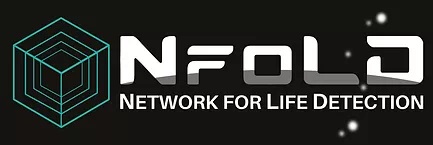Cite as: Benner, S. A. (2022) “Is NASA making itself irrelevant to the search for life in the cosmos?”. Primordial Scoop, e20220323. https://doi.org/10.52400/HKBI5962
The word “love” should be used only with animate objects, like people or pets. It is best not to “love” an organization.
However, to the extent that the word might be applied to organizations, I love NASA.
I have many reasons. My father-in-law was a guidance engineer for the Apollo moon landing. He was in the control room to hear “The Eagle has landed”. My office displays a flag of Mars signed by astronaut Jack Schmitt. Like others of my generation, I had Mercury mission flashcards, and could name all seven astronauts. Even the guy who didn’t fly because NASA’s “rigorous” physical examinations failed to detect that he had a heart murmur.
Yes, my love persists despite this blunder, and NASA’s many (many) others.
For this reason, watching NASA trying to “do” life detection is really (really) painful.
Because I began my professional career in Switzerland, I began to work with NASA only in 1999, after I moved back to the US. As I have noted elsewhere on this blog, Michael Meyer from NASA Headquarters had brought me to Houston to referee NASA exobiology grant applications. With spare time in the evening, I read through the logs of the Viking 1976 missions to Mars. They were on the bottom shelf of the library at the Lunar and Planetary Institute, where Mike had gathered his peer reviewers.
It was there that I learned that NASA had (perhaps) found life on Mars … in its 1976 Viking mission.
The word “proof” should be used only with inanimate things from mathematics. It certainly should not be applied to remarks in the preceding paragraph.
But 20 years after I studied the Viking 1976 life detection experiments, Mark Neveu suggested a way to systematize the analysis. He and his co-authors took NASA’s “technical readiness level” concept to suggest a scale, or “ladder of readiness” with respect to finding life. A nice idea.
The Viking 1976 life detection results met all but (arguably) one of the Neveu “Ladder Criteria”.
So why did NASA decide in 1976 that life did not exist on Mars? How did NASA get the wrong answer?
Briefly, the Viking team misinterpreted results from a gas chromatograph-mass spectrometer. That GC-MS looked for organic molecules on Mars by heating a sample of its soil to 400 °C, hoping to see it evolve organic fragments. Because the results were unexpected, the Viking team concluded that the soil lacked organic molecules. That was taken to “prove” that life was impossible on the surface of Mars.
NASA then shut down the program. For 40 years. NASA did not seek alien life. Indeed, for 40 years, NASA avoided saying that it was seeking alien life. Only in 2019, NASA once again asked the community for input in this area, in a conference in Carlsbad, New Mexico.
To anyone conversant in organic chemistry, the Viking 1976 interpretation mistake was obvious. The work flow for the GC-MS experiment could not possibly have detected a likely class of organic molecules in Martian soil, even if they were quite abundant. Indeed, we now know that they are.
This was a mistake of “cosmic” proportions. It set back life detection by a half century. And if the Viking team had included an organic chemist (it did not), NASA would not have made this mistake in the first place.
But, unfortunately, NASA does not “do” organic chemistry. Engineering, yes, superbly. Geology and astronomy for sure. The astrobiology program has a nice group of biologists. NASA even does a bit of inorganic chemistry.
But most organic chemists do not do space exploration. And when an organic chemist tries, NASA throws him out. Too much “diversity”.
Which brings us to March 2022. This week, NASA’s “Network for Life Detection” (NfoLD) program is holding a workshop to discuss the “Future of the Search for Life”.
Day 1 of the workshop did not mention much organic chemistry. This is problematic, since life detection is the process of distinguishing organic chemistry that has access to Darwinian evolution from organic chemistry that does not. As Viking illustrated, life detection begins with organic chemistry. And however conversant they are in their own fields, astronomers, geologists, and (most) biologists are not conversant with organic chemistry.
I will in due course post here comments assessing whether NASA’s cultural dissing of organic chemistry compromised this NfoLD effort as severely as it did NASA’s interpretation of the Viking 1976 results.
But for today, the first day of the Workshop, one thing stood out. Richard Quinn, one of the organizers, told the workshop participants that they should be thinking about resolving this problem … on the 20 year time scale. At time stamp 40 minutes in the Day 1 proceedings.
It was painful to listen to NASA telling early career people that NASA will get around to detecting life (again) on Mars in … well … 2042. Two thirds of a century after it did so the first time.
Now this is the NASA that I love.
Some questions ask themselves. Does NASA really not know that SpaceX and China are planning to send humans to Mars in the decade before? Does NASA not know that NASA itself has said that NASA will put humans on Mars before twenty years is out?
And does NASA not realize that once humans are on Mars, the task of detecting indigenous Martian life will be much (much) more difficult?
OK (OK). You will stop me now and remind me that my beloved NASA rarely makes its deadlines. So perhaps 20 years is an adequate time line.
But what about China? The China National Space Administration (CNSA) tells us that there will be “Chinese boots on Mars in 2033”. And the CNSA has good political reasons to not fail. CNSA might even take extraordinary risks to do so.
And what about SpaceX? Yes (yes). Maybe Elon Musk is too optimistic. But Musk is a hell of an engineer.
This is why Jan Špaček has been fervent in his argument that life detection must begin immediately. Jan has done his level best to provoke NASA to at least acknowledge the problem.
I scoured the recording of Day 1 of the NfoLD Workshop looking for such an acknowledgement. Not there. Indeed, the notion of urgency to NASA seems to be … well … “alien”.
Douglas MacArthur once remarked that the “history of failure [in war] can almost always be summed up in two words: ‘Too late'”.
On Day 1 of NASA’s NfoLD Workshop, NASA told the world that whatever may come from its committee meeting, it will come “too late” to be relevant to life detection in the one place most likely to be the locale where alien life might first be found.
We love syllogisms on this blog, and applied them to analyze the claim that phosphine on Venus might be a biosignature. Here, the syllogism is clear:
Major Premise: If humans arrive on Mars, then the life detection problem becomes very (very) different.
Minor Premise: Humans will arrive on Mars before 2042.
Conclusion: The current life detection problem must be solved (long) before 2042.
Let us hope that NASA NfoLD does better on Day 2.



